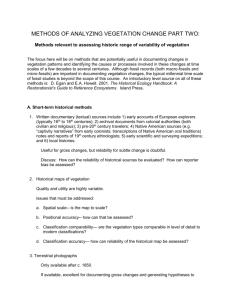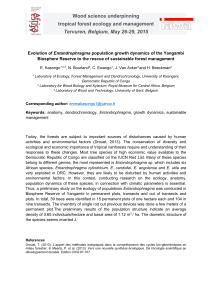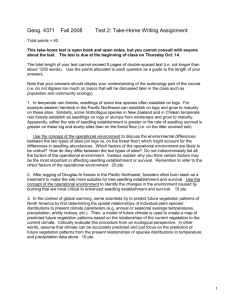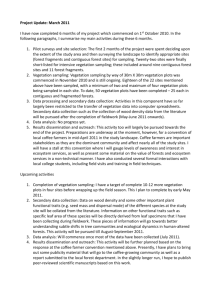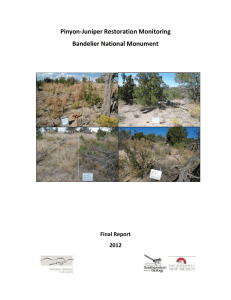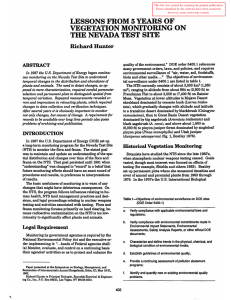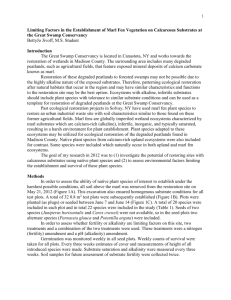R6 Activity Report
advertisement
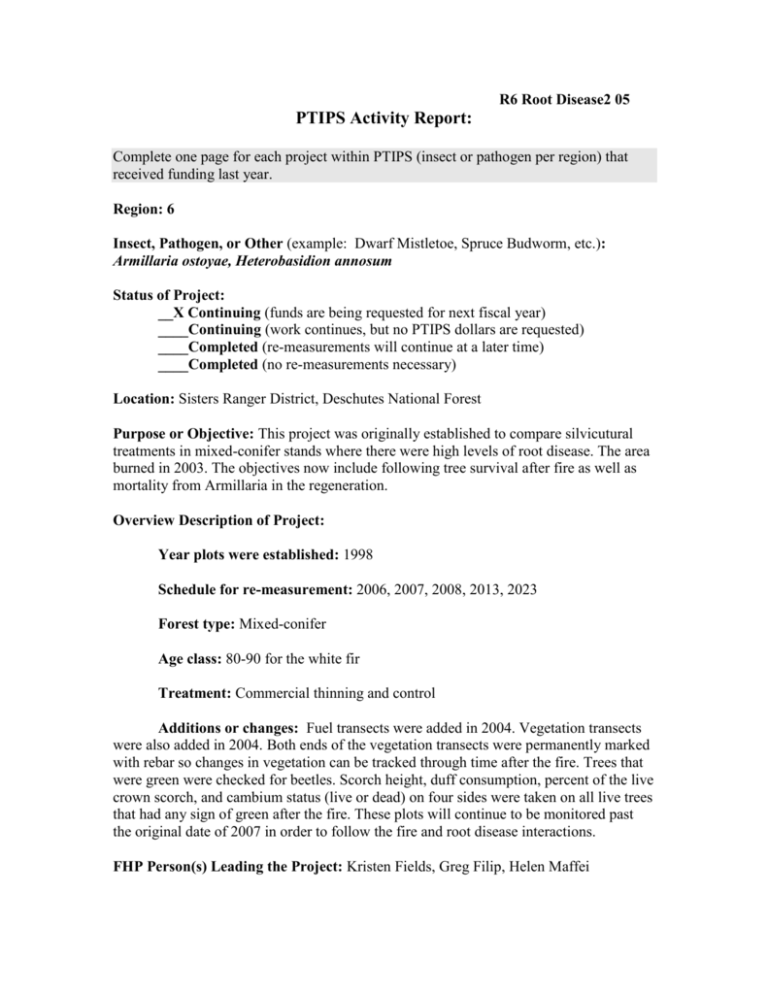
R6 Root Disease2 05 PTIPS Activity Report: Complete one page for each project within PTIPS (insect or pathogen per region) that received funding last year. Region: 6 Insect, Pathogen, or Other (example: Dwarf Mistletoe, Spruce Budworm, etc.): Armillaria ostoyae, Heterobasidion annosum Status of Project: __X Continuing (funds are being requested for next fiscal year) ____Continuing (work continues, but no PTIPS dollars are requested) ____Completed (re-measurements will continue at a later time) ____Completed (no re-measurements necessary) Location: Sisters Ranger District, Deschutes National Forest Purpose or Objective: This project was originally established to compare silvicutural treatments in mixed-conifer stands where there were high levels of root disease. The area burned in 2003. The objectives now include following tree survival after fire as well as mortality from Armillaria in the regeneration. Overview Description of Project: Year plots were established: 1998 Schedule for re-measurement: 2006, 2007, 2008, 2013, 2023 Forest type: Mixed-conifer Age class: 80-90 for the white fir Treatment: Commercial thinning and control Additions or changes: Fuel transects were added in 2004. Vegetation transects were also added in 2004. Both ends of the vegetation transects were permanently marked with rebar so changes in vegetation can be tracked through time after the fire. Trees that were green were checked for beetles. Scorch height, duff consumption, percent of the live crown scorch, and cambium status (live or dead) on four sides were taken on all live trees that had any sign of green after the fire. These plots will continue to be monitored past the original date of 2007 in order to follow the fire and root disease interactions. FHP Person(s) Leading the Project: Kristen Fields, Greg Filip, Helen Maffei Cooperators (names and locations): N/A First Year Funded (Enter N/A if this is a new proposal): FY99 Year Scheduled to End: FY2023 (at least twenty years after fire). Year Data will be Loaded/Entered into National Database Structure: Tree survival data and regeneration data will be entered in the winter of 2005-06. Brief Description of Proposed Accomplishment and Results (either tabular or narrative): 169 plots in 12 different stands were remeasured after fire in Fy04. In FY05 the plots were remeasured for vegetation cover, tree survival, and seedling counts. Remeasurement in FY04 included fuel transects, seedling counts, tree survival and attributes that will help assess tree survival, reestablishing reference points, retagging burned trees, retaking photo points, and GPSing most plots. This will allow us to follow tree survival after wildfire on previously established plots where we have a record of insect and disease activity (beetles, western spruce budworm, Armillaria and annosus root diseases, and dwarf mistletoe). This will also provide insight on the number of seedlings that are killed by root disease in the next 20 years. Sisters Ranger District used the fuel transect data, vegetation transect data, and seedling transect data in their EIS the salvage sale in 2005. They will be utilizing these plots as well as establishing additional plots to monitor tree species regeneration levels after salvage logging. Documentation Associated with Study: Petaisto, I., B. Tandy, T. Craigg, L. Heath, H. Maffei, A. Eglitis, G. Filip, S. Fitzgerald, and L. Ganio. 1999. Thinning, harvesting, and fuel reduction strategies to improve the forest health of white (grand) fir forests on the Sisters Ranger District: study plan and pre-harvest data. Unpublished office report. 54p. Funds Obligated from Beginning to Present Time: FY99 $1.5K FY02 $3K FY03 $4K FY04 $4.7K FY05 $4.25K
